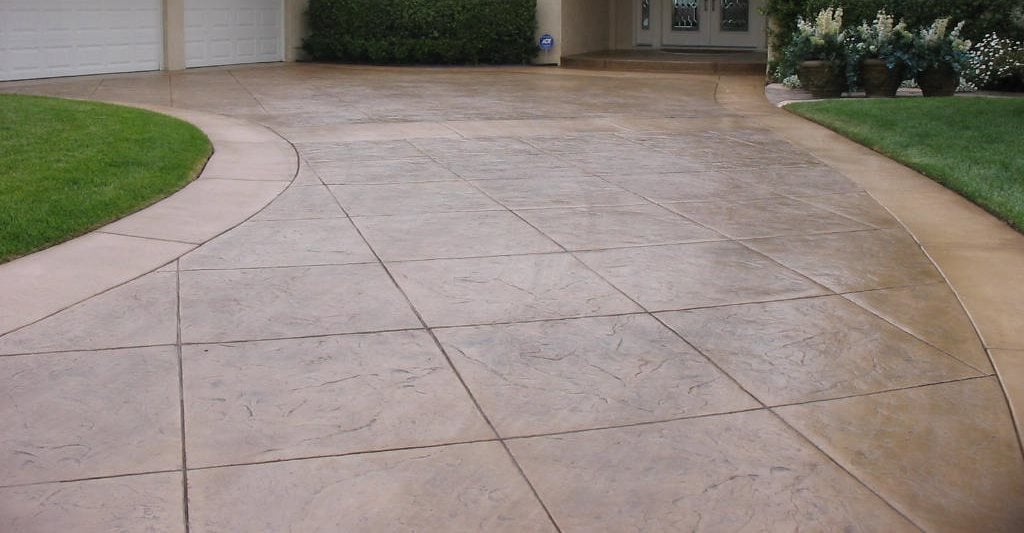The Environmentally Friendly Selection: Concrete Sidewalks for Your Community
Concrete pathways are an ubiquitous attribute in the majority of areas, yet their influence on the setting is frequently overlooked. Nonetheless, choosing concrete for your area sidewalks can make a considerable distinction in terms of sustainability and eco-friendliness. The benefits of selecting concrete go past mere aesthetics and capability. By taking into consideration the environmental advantages and lasting impacts on the neighborhood, the choice of materials for pathways comes to be a vital choice. Let's explore why concrete walkways may be the environmentally friendly option your area requires.
Advantages of Concrete Sidewalks
When taking into consideration the setup of pathways in an area, the benefits of choosing concrete over various other materials are numerous and significant. Concrete pathways offer sturdiness, holding up against hefty foot website traffic, weather fluctuations, and environmental elements much better than alternative materials like asphalt or crushed rock. This durability equates to cost-effectiveness in the future, as concrete walkways require much less frequent repair work and upkeep. Furthermore, concrete is a versatile material that can be quickly tailored to complement the aesthetic of any type of area via various surfaces, colors, and patterns.

Durability and Longevity
How can concrete pathways outperform other products in terms of toughness and longevity? Concrete sidewalks are renowned for their exceptional durability and longevity contrasted to alternative products like asphalt or pavers. The integral toughness of concrete makes it highly resistant to cracking, changing, and basic wear and tear brought on by foot traffic, climate variations, and various other environmental aspects. Unlike asphalt, which can soften in high temperatures and crack in freezing conditions, concrete preserves its structural honesty, needing minimal upkeep in time.
Additionally, concrete's resilience decreases the demand for frequent repairs or replacements, making it a sustainable and affordable selection for area pathways. By investing in concrete pathways, areas can appreciate a resilient and trustworthy facilities that boosts the overall visual charm and capability of the location.
Reduced Maintenance Demands
Concrete walkways attract attention for their minimal maintenance demands because of their resilient nature and lasting performance. Unlike different materials that might call for regular repair work or substitutes, concrete walkways provide a cost-efficient service that requires little maintenance over time. One of the crucial advantages of concrete sidewalks is their resistance to weathering and erosion. This suggests they can stand up to severe weather condition conditions, hefty foot traffic, and other ecological variables without deteriorating quickly.
Routine upkeep for concrete pathways usually includes simple tasks such as routine cleaning to remove debris and occasional sealing to shield the surface area. In comparison to materials like asphalt or pavers that may change, split, or break down more conveniently, concrete pathways keep their structural honesty with very little intervention. In addition, any type of repair services that might be needed are Check Out Your URL normally localized and can be dealt with swiftly, decreasing both the moment and price connected with upkeep.

Ecological Benefits
With a focus on sustainability you could try this out and eco-friendliness, concrete walkways supply notable environmental advantages that add to a greener area framework. In addition, concrete sidewalks have a high solar reflectance index, suggesting they reflect a considerable quantity of sunshine rather of retaining and absorbing warmth.
In addition, concrete is a permeable material that enables water to penetrate right into the ground, lowering stormwater runoff and aiding in groundwater recharge. This aids avoid erosion, reduce flooding, and maintain the natural equilibrium of water systems in the neighborhood. By selecting concrete pathways, communities can make a sustainable choice that positively influences the atmosphere and improves the lifestyle for locals.
Enhancing Community Sustainability
By prioritizing sustainable infrastructure remedies, areas can cultivate a harmonious balance between ecological consciousness and community growth. Enhancing neighborhood sustainability entails a multifaceted method that goes past simply the environmental advantages of concrete walkways. Executing environment-friendly spaces, promoting energy-efficient practices, and cultivating a sense of community engagement are necessary parts of producing a lasting neighborhood.
One way to improve neighborhood sustainability is with the assimilation of absorptive concrete walkways. These sidewalks permit rainwater to permeate right into the ground, decreasing stormwater runoff and decreasing the strain on community water drainage systems. Concrete Contractor. By integrating absorptive Continue sidewalks, neighborhoods can improve water top quality, decrease flooding threats, and boost general ecological resilience
In addition, advertising alternative transport methods such as walking and cycling can considerably decrease carbon exhausts and promote a healthier lifestyle amongst locals. Producing secure pedestrian paths, bike lanes, and assigned greenways can urge citizens to rely less on cars and trucks, additionally adding to the area's sustainability objectives.
Verdict
In final thought, concrete sidewalks use countless benefits for neighborhoods, consisting of sturdiness, reduced maintenance needs, and ecological benefits. By picking concrete pathways, areas can enhance their sustainability and add to a more environmentally friendly environment. It is clear that concrete pathways are the excellent option for communities seeking to boost their infrastructure in a durable and environmentally pleasant way.
When considering the installment of sidewalks in an area, the benefits of picking concrete over various other materials are significant and countless. Furthermore, concrete's sturdiness lowers the need for constant repair services or replacements, making it a cost-efficient and sustainable option for community pathways (Concrete Contractor).With an emphasis on sustainability and eco-friendliness, concrete pathways supply noteworthy ecological advantages that add to a greener neighborhood framework. Enhancing area sustainability entails a complex approach that goes past simply the environmental advantages of concrete pathways.In verdict, concrete sidewalks offer various advantages for communities, including durability, reduced upkeep demands, and ecological advantages